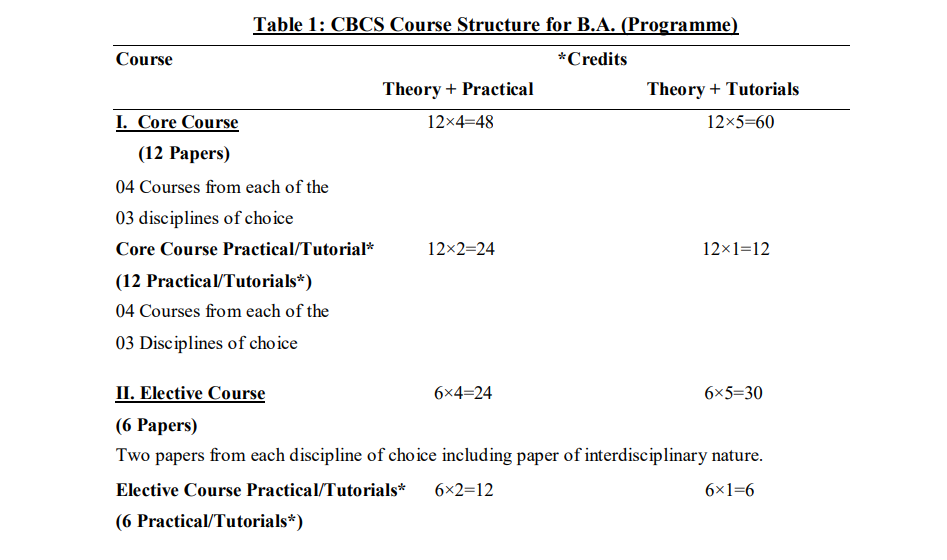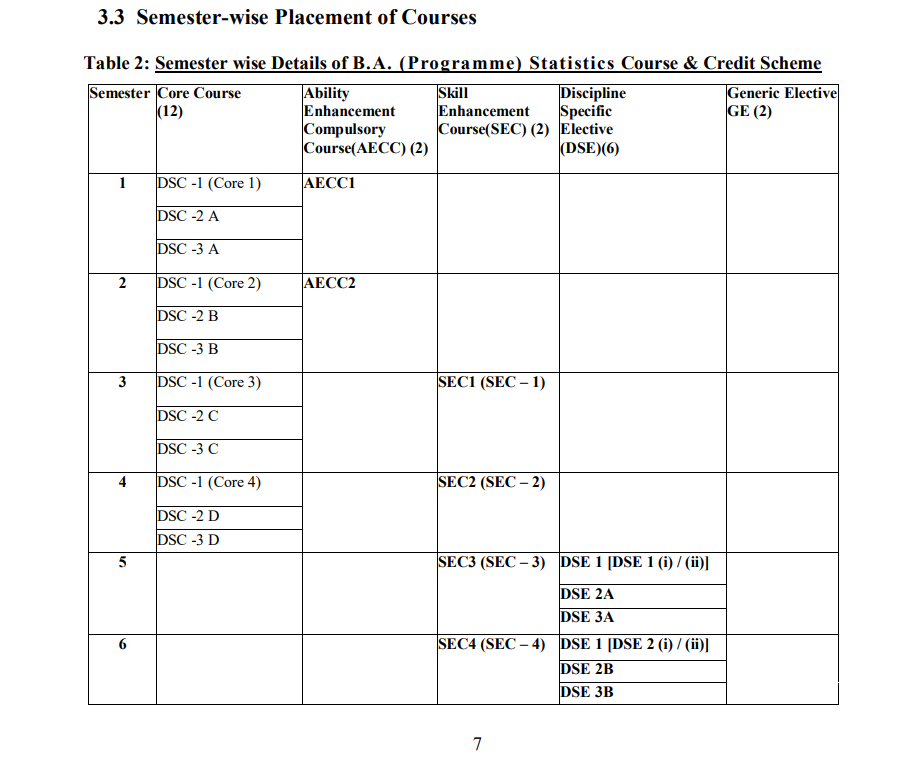How does Delhi University’s Credit System Works?

Delhi University (DU) has been at the forefront of educational reforms in India. One of the significant changes introduced in recent years is the Choice-Based Credit System (CBCS). But that might sound a little haunting, worry not, we have got this well covered for you.
The choice-based credit system has revolutionized how students plan and approach their undergraduate degree. This blog delves into the intricacies of the credit system, its implications for students, and its impact on the academic zone.
Table Of Contents:
What Is A Credit System?
An academic credit is a unit by which the coursework is measured. It determines the number of hours of instructions required per week. One credit equals one hour of teaching (lecture, tutorial, practical work or assignments) or two hours of practical/field work per week. The credit system is a method of assigning academic value to a course. Students earn credits by completing courses.
In other words, it is a standard method adopted by Delhi University for specifying the number of hours of learning effort that a student is expected to put in while completing a course.
In contemporary education delivery models, this learning effort can be across multiple modes of learning, such as Lectures, Lab Work, Assignments, Self-study, E-learning, etc. Norms for relative weights across these learning modes have also evolved.
The credit system allows one to specify programs and individual courses in terms of their required Credit load. This in turn gives a clear picture of the learning effort that a student will have to put into each course as well as the overall program. In general, calendar time is not used to define a program, though there would be a typical duration based on a standard load that students are expected to take.
Key Features Of CBCS
Delhi University will implement the credit-based system in 2023. Under this system, students are required to earn a certain number of credits to graduate, rather than solely completing a prescribed set of courses. The key features of the credit-based system include:
- Choice-Based: Students have the flexibility to choose courses from a wide range of options, allowing them to tailor their degree to their interests and career goals. It additionally provides them with an opportunity to learn various skills derived from their stream courses.
- Credit-Based: The evaluation of a student's performance is based on the number of credits earned rather than traditional marks.
- Semester System: The academic year is divided into two semesters, allowing for continuous evaluation and progress monitoring, usually ranging from January to June and August to September.
- Grading System: Students are awarded letter grades based on their performance, which are then converted into grade points.


How does CBCS work?
While understanding the mechanism of the choice-based credit system can be a little overwhelming, here's a simplified guide to all that you need to know:
- Course Registration: Students select courses based on their interests and career aspirations. The number of credits a student can take in a semester is usually limited and unchangeable.
- Attendance and Participation: Regular attendance and active class participation are crucial for academic success; every score counts.
- Assignments and Projects: Students are evaluated based on their assignments, projects, and other regular coursework.
- End-Semester Examinations: The final assessment of a student's performance is through semester-end examinations, which are pen and paper tests for the discipline courseware and practical as well as theoretical for the additional courses based on your course selection.
- Grading and Credit Accumulation: Based on their performance in exams and coursework, students are awarded letter grades and corresponding grade points. These grade points are multiplied by the number of credits to calculate the total credit points earned for the course.
Know It Better
Here is an explanation of how the grade points are decided in the Delhi University CBCS marking system:
- Grading Scale: Delhi University follows a 10-point grading scale, where each grade corresponds to a specific range of marks. The grading scale is as follows:
- O (Outstanding): Marks >= 80 and Marks <= 100
- A+ (Excellent): Marks >= 70 and Marks < 80
- A (Very Good): Marks >= 60 and Marks < 70
- B+ (Good): Marks >= 55 and Marks < 60
- B (Above Average): Marks >= 50 and Marks < 55
- C (Average): Marks >= 45 and Marks < 50
- D (Pass): Marks >= 40 and Marks < 45
- F (Fail): Marks < 40 - Grade Points: Each grade is assigned a specific grade point, which represents the numerical value of the grade. The grade points for each grade are as follows:
- O (Outstanding): 10
- A+ (Excellent): 9
- A (Very Good): 8
- B+ (Good): 7
- B (Above Average): 6
- C (Average): 5
- D (Pass): 4
- F (Fail): 0 - Calculation of Grade Points: To calculate the grade points for a particular subject, the following steps are followed:
- Step 1: Determine the grade received by the student based on their marks.
- Step 2: Assign the corresponding grade point to the grade based on the grading scale mentioned above.
4. Cumulative Grade Point Average (CGPA): The CGPA is calculated by taking the average of the grade points obtained in all the subjects. It is a measure of the overall academic performance of a student throughout the year.
Benefits And Drawbacks
While the choice-based credit system offers an individual numerous options to explore, it has also a few cons.
Benefits
- Flexibility in course selection: Students have more freedom to choose elective courses that align with their interests and academic goals, rather than being confined to a strict curriculum.
- Emphasis on continuous assessment: Evaluation is based on a combination of assignments, quizzes, projects, and end-of-semester examinations, rather than relying solely on a final exam.
- Transferable credits: Credits earned can be transferred between degree programs within the university, allowing students to change their specialization more easily.
- Opportunity for interdisciplinary learning: Students can take courses from other departments and have those credits count towards their degree requirements, promoting a more interdisciplinary approach to education.
- Multiple Exit Options: Students can leave the university after completing a certain number of credits and earning a certificate or diploma, depending upon the year of exit.
Drawbacks
- Workload Stress: Managing multiple courses with varying credit loads can be challenging for students.
- Faculty Adaptation: Teachers need to adapt their teaching methods to align with the outcomes-based approach of the credit system as well as get acquainted with the varying options of a variety of courses from numerous domains.

Conclusion
While the credit system has brought significant changes to DU, it's essential to continuously evaluate and refine the system. The university focuses on improving the academic growth of students, providing better support to them, and ensuring the quality of courses.
The credit system at DU is a step in the right direction toward creating a more student-centric and flexible education system.
For more interesting and exciting updates about your college and upcoming festivals, stay tuned to Apna Adda.

